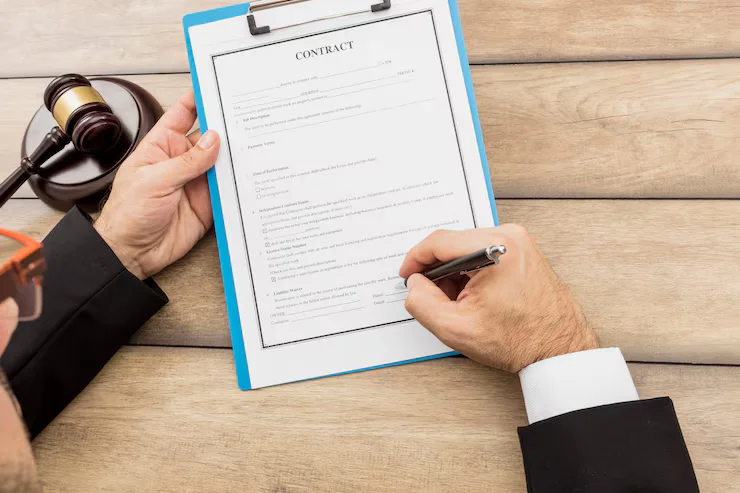Looking to expand internationally or manage legal matters across languages? Then, professional legal translation should be high on your priority list.
Why does it matter? Because the stakes are simply too high to leave room for error. Even a small mistranslation or cultural misstep can lead to serious consequences, non-compliance, legal disputes, financial losses, or damaged partnerships. When legal documents cross borders, they must carry not just the right words, but the right meaning.
In this blog, we’ll walk you through real-world legal translation examples, common scenarios where it’s essential, and practical tips to ensure your documents are accurate, compliant, and culturally on point every time.
What is Legal Translation?
Legal translation is a highly specialized field focused on translating legal documents from one language to another without losing the original intent, tone, or legal precision. Unlike general translation, this work requires deep familiarity with both the source and target legal systems, as well as the specific terminology and context behind each document.
It’s not just about language. It’s about legal equivalence. Translators must navigate complex legal concepts, varying regional laws, and linguistic nuances to ensure the final text is not only accurate but also compliant and enforceable.
So, When Is Legal Translation Needed?
Legal translation is essential for any organization operating across borders. Let’s check together common use cases.
- Contracts and agreements for international business partnerships
- Court documents such as rulings, witness statements, and legal summons in cross-border litigation
- Regulatory content like multilingual privacy policies, patents, and compliance documentation for global operations
Learn how our Legal Translation Services ensure accuracy across jurisdictions.
Examples of Legal Document Translation
Now that we’ve covered when legal translation is needed, let’s take a closer look at the types of documents involved. Legal translation spans a wide range of materials, each with its own requirements and challenges. Below are some key examples where accuracy is absolutely critical.
Court Documents and Patent Filings
When it comes to litigation or intellectual property, the need for precision is even greater. Misinterpretation here can compromise legal proceedings or delay critical filings.
- Court documents like subpoenas, depositions, trial transcripts, and witness statements often require certified translation to be admissible in court.
- Patent-related materials, including technical descriptions, legal claims, and dispute documentation, must adhere to strict terminology and formatting standards specific to each jurisdiction.
These translations demand not just linguistic fluency but also a strong grasp of procedural requirements, legal terminology, and sector-specific vocabulary.
Localization of Legal Content
Legal localization takes things a step further. It’s not just about translating the text, but adapting it to reflect local laws, cultural norms, and regulatory language. This ensures that your legal content isn’t just understood; it’s compliant.
- Terms and conditions adapted to meet consumer protection laws in different regions.
- Privacy policies tailored to frameworks like the GDPR (Europe), CCPA (California), or POPIA (South Africa).
- IP agreements customized to reflect jurisdiction-specific definitions, enforcement protocols, and legal terminology.
Each of these examples demonstrates the importance of partnering with language experts who understand not only the source and target languages but also the legal frameworks and cultural nuances behind the text.
How Legal Translation Really Works
A Step-by-Step Look Behind the Scenes
Legal translation isn’t something you can rush. It’s a careful, deliberate process, more like solving a legal puzzle than simply converting words. So, how does it actually work? Let’s walk through the journey a legal document takes from its original form to a fully translated, compliant version ready for cross-border use.
Step 1: Understanding the Document Inside and Out
Before a single word is translated, everything starts with analysis. We take a close look at the document, what it’s for, who it’s intended for, and which legal system it applies to. Is it written under common law or civil law? Are there cultural or procedural references that need to be adjusted for the target audience?
This step is crucial. Without understanding the legal context, even the best translator can miss the mark. A contract in Saudi Arabia won’t read the same as one in France, and both need to reflect local legal expectations.
Step 2: Translating with Accuracy and Adapting with Care
Once we’ve got a clear understanding, the real work begins. Legal translation requires more than just fluency; it demands precise use of legal terminology. Words like “indemnify” or “jurisdiction” carry legal weight, and there’s no room for ambiguity.
At this stage, we also consider localization. That might mean adjusting phrasing to match the legal framework of the target region or reworking references so they make sense culturally and legally. Tools like legal translation memory systems and term glossaries help us stay consistent, especially when working with large volumes of documents across multiple languages.
Want more on this? Here’s a piece that pairs perfectly.
Step 3: Reviewing, Validating, and Certifying
After the translation is complete, it goes through a thorough review. Another legal linguist, or sometimes a subject matter expert, checks for accuracy, consistency, and tone. If the document is being submitted to a court or government body, it may also need to be validated or certified by a qualified translator.
This final layer of review ensures that everything holds up under scrutiny, both linguistically and legally. The result is a document that reads naturally, respects the legal systems it’s meant for, and is fully compliant.
Our Professional Translation Services ensure precise and culturally adapted legal translations.
A Smart Checklist for Legal Translation Accuracy
- Understand the legal context – Know the jurisdiction, legal system (e.g., civil vs. common law), and purpose of the document before translating.
- Adapt to local laws and culture – Legal content must reflect regional regulations, legal frameworks, and cultural nuances to be enforceable and relevant.
- Translate legal jargon with precision – Misinterpreting a single term can lead to disputes or legal liability. Use exact equivalents backed by legal knowledge.
- Ensure consistency across languages – Use legal glossaries and style guides to align terminology across all multilingual legal documents.
- Use Translation Management Systems (TMS) – These tools help track changes, manage legal content workflows, and maintain version control.
- Leverage machine translation wisely – MT can speed up initial drafts, but always follow with human post-editing by legal translation experts.
- Work with certified legal translators – For contracts, patents, and court documents, certification ensures accuracy, compliance, and legal validity.
- Localize, don’t just translate – Tailor phrases, legal references, and document structures to the legal norms of the target jurisdiction.
- Collaborate with legal professionals – Complex projects benefit from legal counsel’s input to catch jurisdiction-specific issues.
- Proofread and validate thoroughly – Always have a second linguist or legal reviewer confirm accuracy, compliance, and clarity.
- Treat legal translation as risk management – Accurate translation isn’t just a service—it’s a safeguard for global operations.
Get Expert Legal Translation Services Today
Ensure accuracy and compliance with our professional legal translation services.
Our Legal Translation Services combine deep legal expertise and linguistic precision to help you navigate global markets confidently and without barriers. Whether it’s contracts, court documents, or regulatory materials, we deliver accurate, certified translations tailored to your needs.
Discover fresh content every day—visit 2A Magazine.







